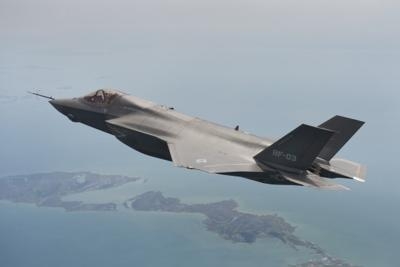First Contracts Already Exceeding Combined Target By $1 Billion
U.S. Senator Carl Levin (D-MI) (pictured), chair of the Senate Armed Services Committee, says that Lockheed Martin needs some pressure to keep the costs of the F-35 JSF program from soaring further out of control.

"We have to keep the pressure on," Levin said in a recent interview. "We've got to have contracts which are fixed-price. We have to make reductions."
Bloomberg Business Week reports that LMC has already spent $1 billion more than its target costs for the first four contracts for 63 airplanes. A U.S. GAO report released last week indicates that Washington will have to spend $12.7 billion per year, on average, through 2037 for the F-35 program. Pentagon officials told reporters in March that the "lifecycle cost" from development through production of 2,443 airplanes and support over 55 years, is now up to $1.51 trillion. Levin said he has "plenty of concerns" about the Pentagon's efforts to control costs, and said the F-18 is a "backup" to the JSF.
Lockheed CEO Robert Stevens told Bloomberg Business Week that Senator Levin's points are valid, and "we want to get this program right."
Meanwile, Frank Kendal, the Pentagon's undersecretary for acquisition, said in a presentation in February that "putting the F-35 in production years before the first flight test was acquisition malpractice. It should not have been done, but we did it." But Stevens said that every aircraft development program overlaps with its production. Otherwise, he says it would be totally obsolete before the first airplane was built.

The GAO report concludes that Over the last two years, the JSF program has undergone extensive restructuring that places it on a more achievable course, albeit a lengthier and more expensive one. At the same time, the near-constant churn (change) in cost, schedule, and performance expectations has hampered oversight and insight into the program, in particular the ability to firmly assess progress and prospects for future success. Going forward, it will be imperative to bring stability to the program and provide a firm understanding of near- and far-term financial requirements so that all parties—the Congress, Defense Department, and international partners—can reasonably set priorities and make informed decisions amid a tough fiscal environment.
The JSF remains the critical centerpiece of DOD’s long-term tactical aircraft portfolio. System development of the aircraft and engine ongoing for over a decade, continue to experience significant challenges. The program’s strategic framework, laden with concurrency, has proved to be problematic and ultimately, a very costly approach. DOD over the past year has identified substantial cost overruns attributed to relatively poor execution in production and specific concurrency-related inefficiencies. There is risk of future cost growth from test discoveries driving changes to design and manufacturing processes. Effectively managing software and the global supply chain is critical to improving program outcomes, increasing manufacturing throughput, and enabling future expansion of JSF procurement.
 A Crazy Tesla Flying Car is Coming
A Crazy Tesla Flying Car is Coming ANN's Daily Aero-Term (11.xx.25): NonApproach Control Tower
ANN's Daily Aero-Term (11.xx.25): NonApproach Control Tower Aero-News: Quote of the Day (11.01.25)
Aero-News: Quote of the Day (11.01.25) ANN's Daily Aero-Linx (11.01.25)
ANN's Daily Aero-Linx (11.01.25) Classic Aero-TV: EAA Introduces Angle of Attack Training
Classic Aero-TV: EAA Introduces Angle of Attack Training




